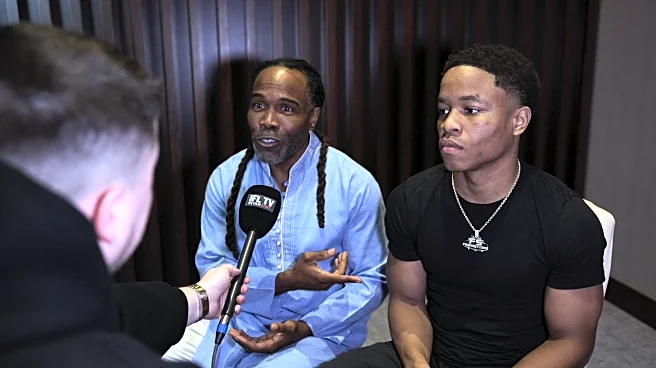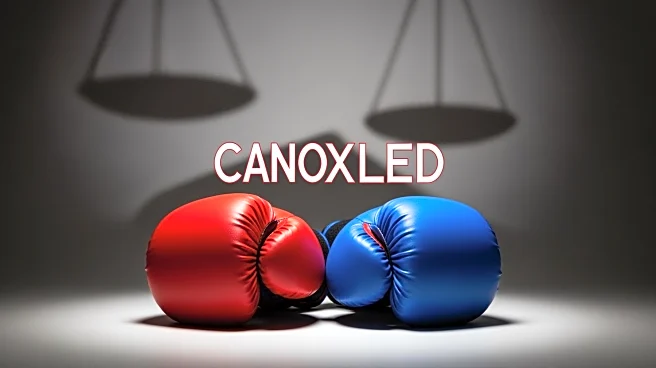What's Happening?
Dmitry Bivol, the WBO, WBA, IBF, and The Ring light heavyweight champion, is considering a move to the cruiserweight division. Bivol has not fought since February due to back surgery but is expected to return
in early 2026. Matchroom Boxing promoter Eddie Hearn has indicated that Bivol is seeking high-profile fights, mentioning potential opponents such as Canelo Alvarez, David Benavidez, Artur Beterbiev, and Jai Opetaia. Bivol's interest in Opetaia, the IBF cruiserweight champion, suggests a possible division change, marking his first competition outside the light heavyweight class.
Why It's Important?
Bivol's potential move to cruiserweight could significantly impact the boxing landscape, offering fresh matchups and increasing interest in the cruiserweight division, which has struggled with star power. A fight against Jai Opetaia would be particularly compelling, as Opetaia is considered the top cruiserweight but has faced challenges in attracting fans. Bivol's entry into the division could elevate its profile and provide lucrative opportunities for both fighters. Additionally, Bivol's pursuit of high-stakes bouts reflects a broader trend of boxers seeking legacy-defining fights.
What's Next?
If Bivol decides to move up to cruiserweight, negotiations for a fight with Jai Opetaia could commence, potentially leading to a high-profile bout that would attract significant attention. Bivol's return to the ring is anticipated in early 2026, and his choice of opponent will likely influence the cruiserweight division's dynamics. Fans and stakeholders will be watching closely to see if Bivol's move materializes and how it affects the competitive landscape.
Beyond the Headlines
Bivol's decision to change weight classes could have long-term implications for his career trajectory and the boxing industry. It may inspire other light heavyweight champions to consider similar moves, potentially reshaping the cruiserweight division. The shift also highlights the strategic considerations boxers face in balancing legacy, financial incentives, and competitive challenges.












